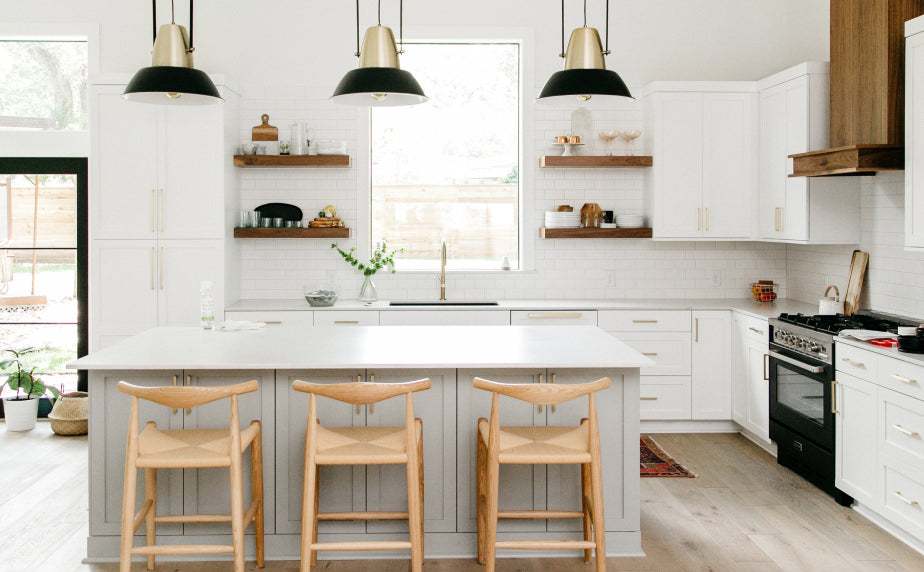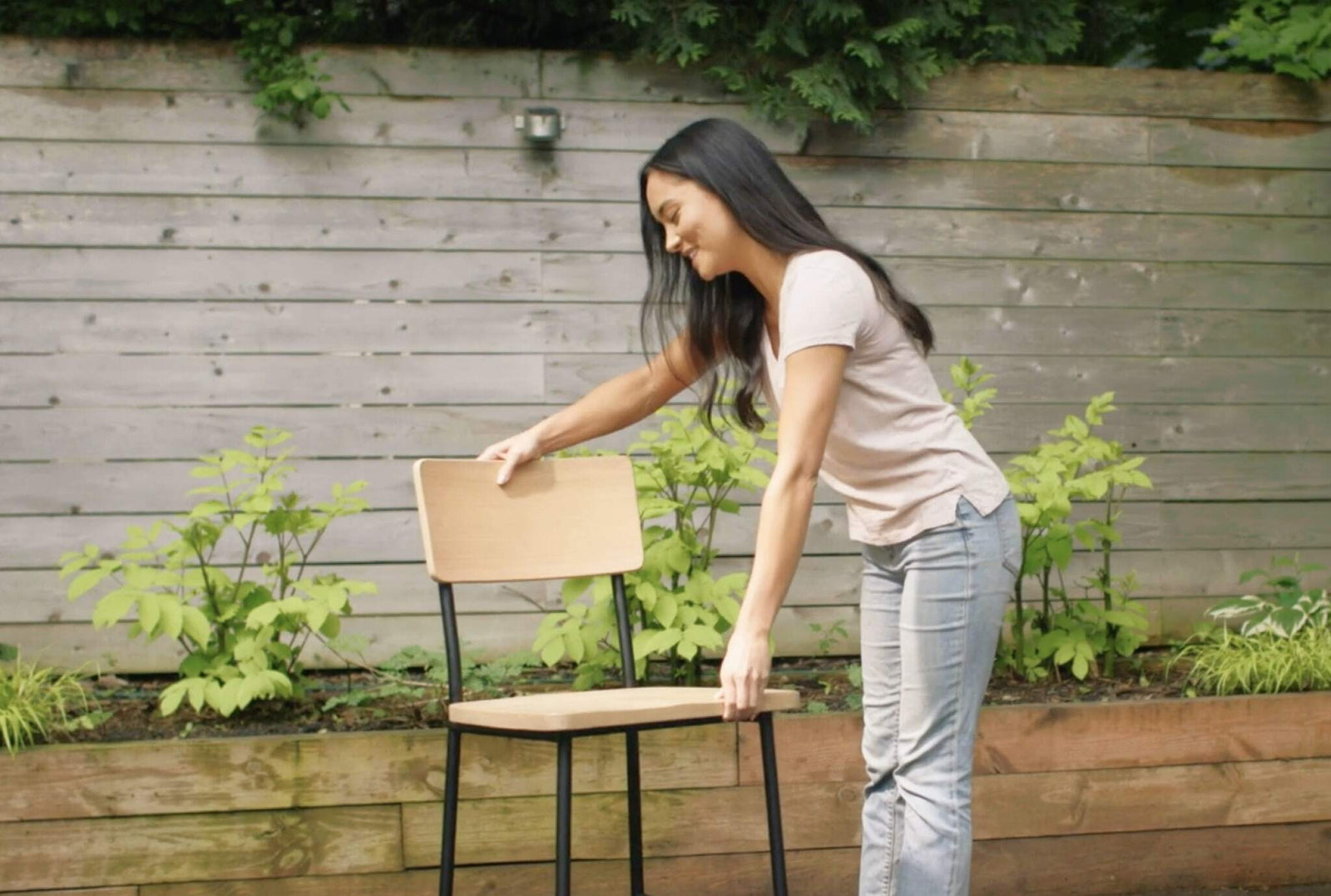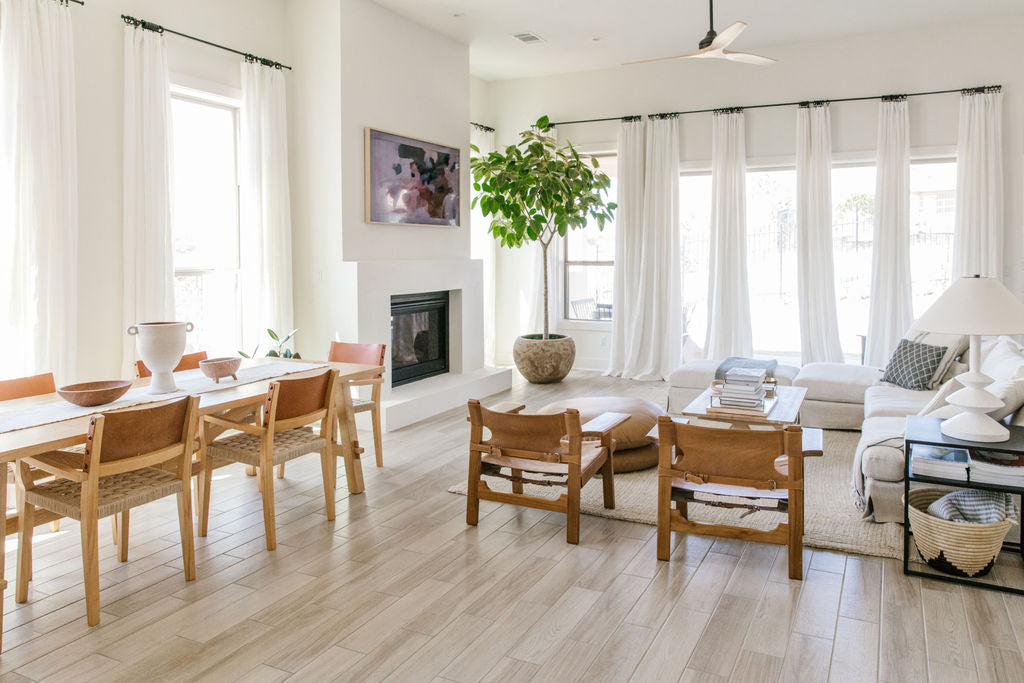7 Surprising Myths About Non-Toxic Furniture

Creating a healthy home and completing #TossTheToxins is a process.
We have found that removing harmful pesticides, cleaning products, synthetic fragrances, and personal care products is a great start and creates a dramatic improvement in your home’s air quality.
From there, as we are able, we recommend getting rid of plastics – BPA / Phthalates, perfluorinated substances (PFASs), and formaldehyde.
During this undertaking, investing in a high-quality air purifier, HEPA vacuum, and/or water filter are options that can further reduce your family’s toxic load.
If you’ve gotten this far, bravo! You’ve made some serious headway in cleaning up your indoor air quality while reducing your everyday exposure to hundreds of synthetic chemicals.
For those of us who wish to take it a step further, we move onto the bigger ticket items like reducing EMF exposure, cleaning up any mold or mildew issues, and replacing toxic furnishings and building materials with safer options.
And while tackling things like electromagnetic fields and molds may sound like a feat, many people find that replacing their home furnishings with truly safer options is one of the more challenging steps.
Why? Two reasons.
#1: Furniture manufacturers aren’t required to list what they use in creating a sofa. The foams, glues, manufactured woods, and other materials can all contain harmful chemicals that silently degrade the indoor air quality in our homes.
#2: It’s difficult to find reliable information online about what’s really toxic and worth avoiding and what’s not. All this conflicting advice can make it hard to know where to invest your money…which is what inspired this myth-busting post.
As an Environmental Consultant and Building Materials Specialist, I’ve been helping clients clean up their homes by avoiding harmful chemicals in furnishings, building materials, cleaning products, etc. for over 30 years.
It’s my pleasure to share some of that knowledge with you today, to help make your search for healthier furnishings an easier, more informed, and empowering one.

Myth: Most Wooden Furniture Contains Formaldehyde
FACT: While it’s true that all wood does contain trace amounts of naturally occurring formaldehyde and some solid wood furniture is sealed and stained with formaldehyde containing finishes, it’s the manufactured woods, like particleboard, plywood, MDF, and pressed board that are the primary sources of formaldehyde in the home.
When it comes to solid wood furniture, look for woods such as oak, beech, birch, maple, linden, ash, poplar, pine, aspen, and others.
The good news is, thanks to increased public awareness, it’s much easier to source formaldehyde-free furniture than it used to be.
Just look for the formaldehyde-free label when you’re shopping online or ask the manufacturer (or your carpenter) directly.
Avoid any manufactured wood with a NAUF label. The claim is that it has no added urea formaldehyde, but fails to mention that it does contain phenol formaldehyde.
While urea formaldehyde is more toxic than phenol formaldehyde, this labeling lures people to a product that still does contain harmful formaldehyde.

Myth: Natural Fabrics Are Always a Safer Choice for Drapes, Upholstery, Rugs, etc.
FACT: While natural fabrics are always a better choice than synthetics, any fabric bearing the names “easy care,” “wrinkle-free,” “non-iron,” and “stain-resistant” are treated with a process that includes chemicals like formaldehyde and cancer-causing VOCs.
The best way to avoid these chemicals is to opt for natural fabrics like cotton, linen, wool, etc., without these labels.
It’s well worth it to keep those insidious chemicals out of your home and if wrinkles are an issue, use an easy to use very effective personal handheld steamer on drapes and fabrics.
Also, you want to avoid Azo and chromium dyes – even some so-called green untreated fabric may have azo dyes.
Azo dyes are not only a contact issue but also an air quality issue.
The azo dyes can be absorbed into the skin, undergo reduction decomposition to form carcinogenic amines, can bioaccumulate and are banned in the EU.
When shopping for wool carpets, rugs, mattresses, and other furnishings we recommend inquiring whether the wool has been chemically-treated for moths or any other purpose.
Always look for organic wool, Gots certified organic wool, wool from the Wool Gather’s Carting Mill “Premium Wool,” or wool from “Joe Pozzi.”
Myth: Buying Older Furniture Eliminates the Worry of Outgassing/Offgassing Chemicals
FACT: This is partially true, but it depends upon the type of furniture and where it has been.
For example, older solid wood furniture is unlikely to cause air quality issues even if it was once treated with a chemical finish.
Still, antique or older wood furniture may require a wipe down and sunning a bit to freshen and outgas odors that have been picked up over the years.
However, an old sofa or upholstered chair can release toxins that ride on dust and degrade your indoor air quality from its foam, glues, and fabric treatments.
Plus, furnishings with a long history may harbor molds.
While buying used solid wood furnishings can be a great way to avoid bringing new chemicals into your home, old upholstered furniture may not be a safer option unless it has a clean history, free of mold, and made before flame retardants were required.

Myth: Flame Retardants Are Only Found In Mattresses and Children's Sleepwear
FACT: Flame retardants are routinely added to a variety of furnishings including sofas, chairs, carpetings, rugs, and drapes.
The best way to avoid this is to look for flame-retardant-free furnishings.
This can be accomplished by purchasing furniture made from untreated natural materials, such as wool (more on this in the next point), linen, cotton, etc., looking for the “flame-retardant-free” label on furnishings (Wayfair, for example, has a search function for this) and inquiring with the manufacturer for extra insurance.
Be aware that some manufacturers have replaced known toxic flame retardants with “less toxic” ones.
If in doubt, ask for a written guarantee that all materials are free of any flame retardant chemicals.
It’s also important to look for mattresses with flame-retardant-free foams…which brings us to our next point.
Myth: If a Mattress Says “Natural” or “Organic” It's Safe
FACT: Mattress manufacturers do not have to disclose everything they put into their mattresses. Therefore, they can use some organic materials…and a whole lot of synthetics and chemically-treated fabrics, foams, etc.
For example, many manufacturers boast the use of soy-based foam as a healthier alternative to synthetic.
But what they don’t tell you is that the vast majority of soy-foam mattresses are a mixture of 20-30% soy with 70-80% synthetic, chemical-laden foam.
Then there’s the issue of flame retardants, which are added to many types of “natural” or “green” mattresses containing urethane foams, along with a laundry list of other undisclosed synthetic and chemically-treated materials.
Fortunately, this doesn’t mean you can’t find a truly healthy and natural mattress for the whole family.
To learn more about this topic, including our favorite brands, check out: How to Choose the Safest and Healthiest Mattress.
Myth: “Sustainable” or “Green” Furniture Means Healthier Furniture
FACT: We certainly commend companies for sourcing materials sustainably, however the terms “sustainable,” or “green” don’t guarantee a furniture product is actually safer.
For example, a couch that “contains sustainably sourced wool” may also contain synthetic fabrics, toxic glues, and/or formaldehyde-containing particleboard.
The good news is there are many progressive and honest companies that are committed to the health of both people and the planet.
The only way to know for sure is to contact the manufacturer to inquire.

Myth: Non-Toxic Furniture Is Really Expensive and Difficult to Source
FACT: While it’s true that the furniture industry uses a lot of unregulated toxic chemicals, it’s a lot easier to find non-toxic or less toxic options than it used to be.
For example, you can find many sustainable options online—either direct from the manufacturer or even on discount home decor sites.
Safer mattresses have also become much more affordable than they used to be, like Avocado. And even mainstream manufacturers, like Pottery Barn, now offer safer children’s furniture options.
Opt for Non-Toxic, Healthy Furniture & Decor
Yes, sometimes getting custom furniture made is the way to go, especially for the chemically-sensitive, but there are a lot of good brands out there that make healthier decorating more convenient and budget-friendly.
Shopping for truly non-toxic furniture doesn’t have to be an overwhelming or confusing experience.
Knowing the right questions to ask and what to look for plus the information in “Tools To Help You Vet Furniture,” should hopefully help you to continue your journey to create a safe and healthy haven to call home.
Categories

Marilee Nelson
Marilee Nelson is an Environmental Toxins expert who has spent nearly 30 years advocating for the chemically-sensitive and chronically-ill. She is a Board Certified Nutritionist, Certified Bau-Biologist and Bau-Biology Inspector and specializes in Food As Medicine. She has helped thousands of families and individuals identify, heal and recover from toxic exposures and is on a mission to revolutionize the way American families view their health.








